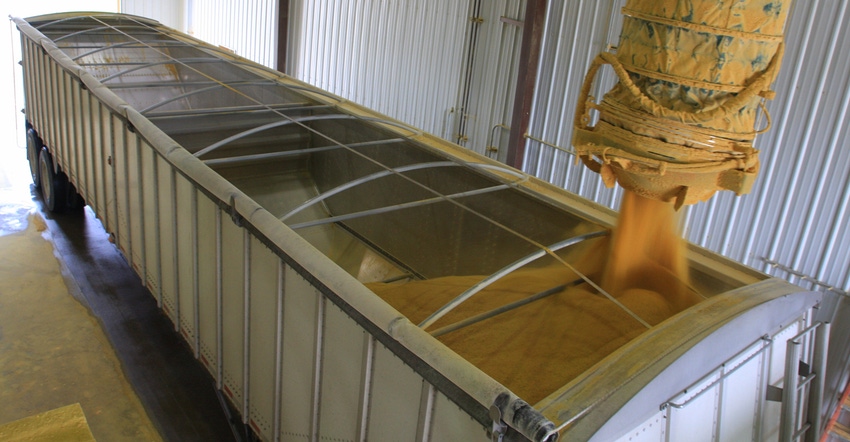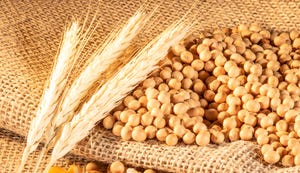
Livestock producers are facing rising feed prices, forcing many to look for cheaper feed options this winter. Distillers grains may work both financially and nutritionally.
There are three forms of distillers grains — dry, modified and wet, which refers to the amount of water in the distillers grains. All work as a supplement in feed rations. However, producers must understand which product they are purchasing and how these different products affect feed rations and livestock performance, Gene Schmitz says.
Schmitz knows from personal experience. He’s spent years balancing feed rations for cattle as a University of Missouri Extension livestock specialist. And it takes some planning and searching for the right distillers grains winter-feeding combination.
Financial effect without adjustments
Schmitz recently assessed grower rations based on a 2021 hay test and using distillers grains and corn to formulate the supplement. He compared all three forms of distillers grains in the rations. “My goal,” he says, “was to add 250 pounds of gain in 120 days, for an average daily gain of 2.10 pounds per day.”
To meet the target average daily gain, his feeding rate was 6 pounds of modified distillers grains, compared with 3 pounds of dry distillers grains. The amount of corn in these two rations was slightly different.
Modified and wet distillers grains are generally cheaper per ton. Schmitz found modified to be the cheapest feed cost per pound of gain at 44 cents per pound of gain, while dry had the highest feed cost per pound of gain at 48 cents per pound of gain.
However, he warns, feeding modified or wet may increase the overall feed costs by extending days on feed to achieve gain, if feeding rates are not adjusted for moisture content.
Schmitz looked at feed costs if rations were not adjusted for differences in moisture between the three types of distillers grains. He assumed the feeding rate of distillers grains stays the same based on 3 pounds of dry distillers grains per day on an as-fed basis. The results?
Feeding 3 pounds of modified instead of dry distillers grains reduces average daily gain by 0.55 pounds, extends the feeding period by 35 days and increases total feed costs by 15%.
Feeding 3 pounds of wet instead of dry distillers grains reduces average daily gain by 0.76 pounds, extends the feeding period by 59 days and increases total feed costs by 63%.
“If producers are looking to use modified or wet distillers grains, they must know the moisture of the product they are buying and how to make appropriate ration adjustments in order to keep performance and feed costs comparable to the dry product,” Schmitz says. “The same is true for dry vs. wet corn gluten feed.”
Schmitz pointed out that modified and wet distillers grains have availability, transportation, storage and shrink issues to consider that are not included in his above costs. “Delivering feed to the feed bunk may also pose some challenges if producers aren’t used to feeding higher-moisture products,” he adds.
Nutritional considerations
Having distillers grains in a winter feed ration requires planning of feed rations. Beef producers must know how to make appropriate adjustments to the feeding program to ensure performance is adequate. However, there are nutritional considerations as well.
According to Hubbard Feeds, there are pros and cons to feeding distillers grains in winter. Here are some of the positives:
Distillers grains contain crude protein. It is concentrated to roughly three times the level found in corn grains. Distillers grains have between 25% and 35% crude protein.
Distillers grains have energy value. This value is equal to or greater than corn. With the removal of starch from the grains, the energy comes from corn oil and digestible fiber, as well as some from crude protein. Due to the energy in distillers grains coming primarily from digestible fiber rather than starch, it is less likely to upset the rumen and create acidosis compared to corn.
Distillers grains are a good source of phosphorus. Feeding dried distillers grain can reduce or eliminate the need for phosphorus supplementation. However, producers must have balanced mineral programs in place to maintain a minimum calcium-to-phosphorus ratio of 2 to 1.
Here are some of the negatives:
Not all distillers grains are the same. The nutrient composition of distillers grains varies by ethanol plant. Also, solubles are added back to distillers grains in differing proportions, which further increases nutrient variability.
Sulfur toxicity is possible. In distillers grains, sulfur levels range from 0.35% to 1.4%, which can potentially cause health concerns in beef cattle. Cattle have a nutrient requirement for sulfur of 0.15% dry matter, with a maximum tolerable threshold of 0.4%. Signs of sulfur toxicity include decreased feed intake and slow or stunted growth. Producers need to consider all sulfur sources that will be consumed by cattle before deciding to include distillers grains or related products in their winter-feeding programs.
To find the right mix of wet, modified or dry distillers grains for winter feed rations, beef producers should visit with their local Extension agent or feed nutritionist.
About the Author(s)
You May Also Like






